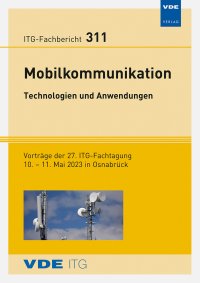6G and the Sustainability Aspect: Exploiting Surplus Renewable Energy for Distributed Learning Clusters in 6G Networks
Conference: Mobilkommunikation - 27. ITG-Fachtagung
05/10/2023 - 05/11/2023 at Osnabrück
Proceedings: ITG-Fb. 311: Mobilkommunikation – Technologien und Anwendungen
Pages: 6Language: englishTyp: PDF
Authors:
Rueb, Matthias; Herbst, Jan; Lipps, Christoph; Schotten, Hans Dieter (Institute for Wireless Communication and Navigation, University of Kaiserslautern, Germany & Intelligent Networks Research Group, German Research Center for Artificial Intelligence, Kaiserslautern, Germany)
Abstract:
Main design criteria within the development of 6G are sustainability and resource-efficient application. With advances in Artificial Intelligence (AI) methods towards increasingly larger and more complex Neural Network (NN) architectures, the question arises of how the ever-greater computational effort and the associated power consumption can be compatible with sustainability and environmental requirements. Therefore, in this work, the utilization of excess renewable energy sources to operate server clusters for the computation of AI in the context of autonomous processing in upcoming 6G frameworks is discussed. The current trend toward larger AI models and the necessity of collaborative work is highlighted. In particular, a vision of incorporating small-scale computational units via wireless communication into holistic collaborative schemes in upcoming wireless networks is presented. Since wind power is, analogous to solar energy unreliable and the production depends on natural factors, the requirements and challenges for existing frameworks are elaborated. In this context, synthetic data of the Baltic Eagle windfarm in the northeast of Germany is utilized to illustrate the energy fluctuations of surplus energy and then derive the requirements for predictive AI and cluster organization. For that purpose, a heuristic simulation framework is designed investigating the impact of prediction accuracy for server failure due to such fluctuations utilizing Autoregressive Integrated Moving Average (ARIMA) as a baseline for future research.


